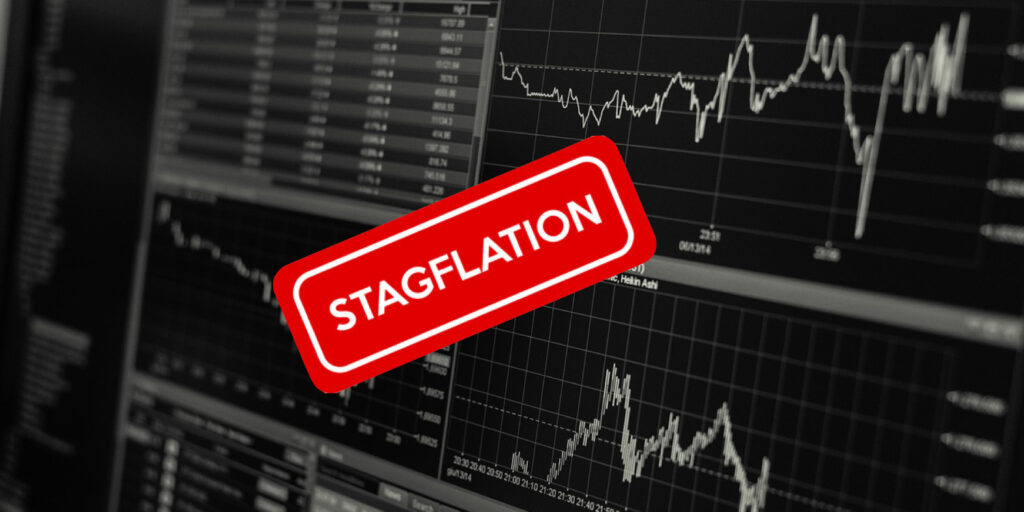The bitterest of economic pills
Stagflation is a particularly ugly word for those old enough to remember the brutal effects of high inflation and high unemployment in the 1970s. And speaking of inflation if we measure it by the same basket of goods used in the late 70s and 80s the annual inflation rate would be 15%, Apparently, inflation is neither 8.5% nor transitory. With inflation surging as the economy stagnates concerns of stagflation have returned. Stagflation, the dreaded S-word of the 1970s or what some economists call the bitterest of economic pills.

However, all is not lost. What we are witnessing is an economic cycle, one that reminds us that every bill eventually comes due. A bill for decades of government largesse, easy money, and trillions of dollars in Covid stimulus. Ironically, the pandemic didn’t crush our economy but our response to it will harm millions of Americans. Today we are just beginning to see the outcome of central bank policies and political will. Both stand to especially harm those who are retired and living on a fixed income.
And speaking of a fixed income, often the image of a poor miserly penny-pinching pensioner often comes to mind. But, truth be told, a retiree bringing in precisely $60,000 a year is just as much on a fixed income as the one earning $90,000. Beyond their income disparity, each will feel the brunt of inflation differently; what some financial planners call their individual inflation rate. For example, a 70-year-old widower who’s renting is exposed to more inflationary pressures with rising rents than a 70-year-old who’s living in a home with a fixed mortgage payment. Yet both are experiencing consumer price inflation in non-discretionary items such as gasoline, food, prescriptions, electricity, natural gas, and heating fuel.
So where does this leave future reverse mortgage applicants? In short, they’ll need to have considerably more equity accumulated to offset the impact of higher interest rates and the subsequent lower principal limit factors that determine how much money for which they may qualify. I say considerably because an effective interest rate of 7.5-8.5% for a HECM loan is not far-fetched. And, keep in mind in the years 2005-2007 during the heydays of HECM lending, the average expected rate hovered just below seven percent. Certainly, the presence of large retail banks originating HECMs helped, but the pool of eligible homeowners with adequate equity was there and remains today.
Looking back to interest rates keep in mind that the Federal Reserve has only just begun to throw cold water on inflation by increasing interest rates to slow the economy. Rates that many economists say must be higher than the rate of inflation to be effective. If true, this leaves much headroom for future rate hikes unless inflation shows early signs of retreating or unemployment begins to spike.
Granted, entering a period of inflation, economic contraction, and possible stagflation is somewhat unnerving. However, it is during these times of upheaval that economic solutions, such as reverse mortgages may regain their luster and appeal. After all, where else will older homeowners find the additional ten, fifteen, or twenty percent additional cash flow to offset the increased cost of living?







1 Comment
Many seniors are repulsed by the mere mention of the economic term “stagflation” but it is hardly the worst economic pill to swallow. Of all the economic conditions which scare most economists is what was seen in Germany in 1923, hyperinflation.
We in this country experienced something called the Great Inflation which had its foundation in the Vietnam conflict and LBJ’s economic policies guided by the principles of the Great Society. The period of the Great Inflation reached one peak in 1974 of 12% inflation with inflation temporarily subsiding only to accelerate to its pinnacle in 1980 of 14.5%. It was only by targeting inflation during the Reagan era that this period of economic shock subsided more than for a “transitory” period of time. Some identify one period of the Great Inflation as a period of stagnation, particularly in the economically inept period of the Carter Administration,
However, nothing scares our Fed economically quite like the term hyperinflation. When one reads post World War I German history up until the early 1930s, the German people lived in a society that went from being “normal” to one where the workday had to be stopped in midday so that wages could be paid and basic food purchased before evening when those wages could not buy basic necessities. (Imagine waiting almost a month for a commission check in those conditions?) To delve into what temporarily broke the back of such repressive inflation is to proceed into the murky waters of one of most vile and detestable periods (and persons) of human history — so I end all such discussion here.
In the last decade, the power of hyperinflation (on a much smaller scale than that of 1923 Germany) to ruin the economies of nations can be clearly seen in Venezuela during 2021 (yes, last year) when inflation grew to be almost 700% per annum!!! If that rate of inflation hit pump prices of gasoline in our country now, the average pump price of regular gasoline in Los Angeles would climb from $6.32 per gallon in Los Angeles to over $44 per gallon by July 2023. Imagine what that would do to the buying power of money being set aside for the down payment for a new house?
So while it is true that stagflation is bad, hyperinflation is generally far worse.